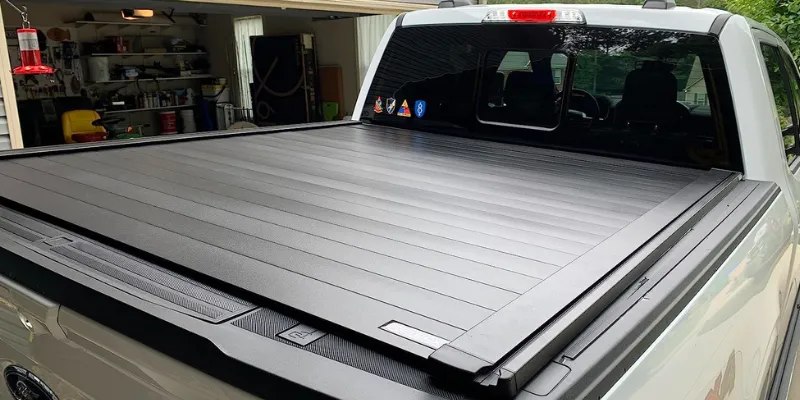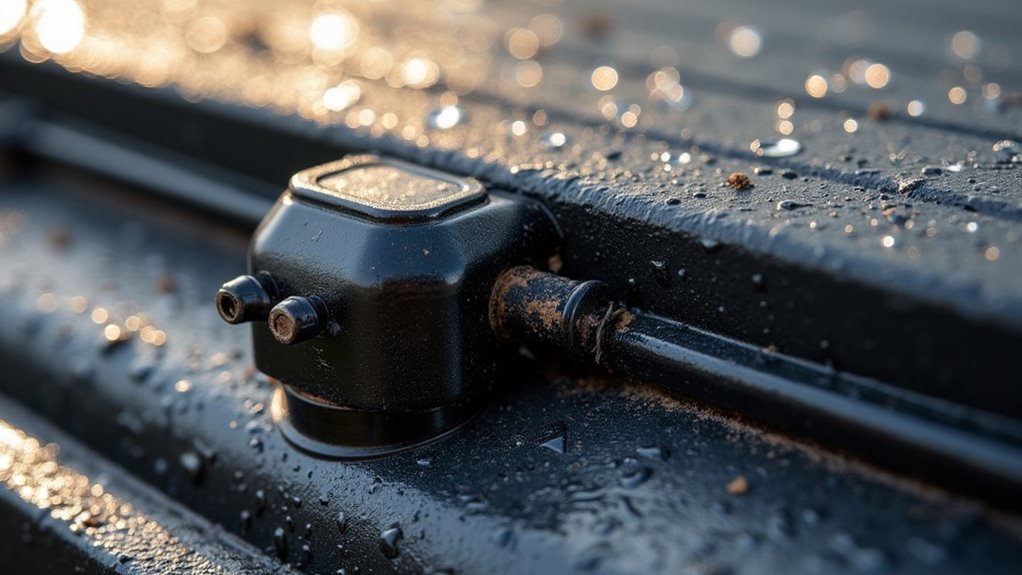The Retrax PowertraxPRO XR truck bed cover exhibits several operational challenges that merit systematic analysis.
Users report issues ranging from electrical system malfunctions to compromised weather sealing integrity.
The unit’s complex motorized mechanism, while innovative, introduces potential failure points that can affect daily functionality.
Technical evaluation reveals both installation-dependent complications and inherent design limitations, particularly in adverse conditions.
These issues demand a thorough examination of root causes and viable solutions.
Common Installation Challenges and Solutions

When installing the Retrax PowertraxPRO XR, proper alignment stands as the critical factor in preventing operational malfunctions.
The installation process requires precise measurement of rail distances at the reel to maintain parallel positioning, which directly impacts the retractable cover’s performance.
Users encountering alignment issues can utilize the nylon adjustment screws located within the rails for precise calibration.
A key inspection point involves verifying that all shims are securely fastened to the clamps, as loose components frequently result in water leakage and misalignment problems.
When bearing displacement occurs due to improper rail setup, immediate adjustment is necessary to prevent further complications.
For persistent installation challenges that exceed DIY solutions, owners should explore warranty options through Retrax or seek professional evaluation to guarantee peak system functionality.
Electrical System Failures and Troubleshooting
Despite the robust design of the Retrax PowertraxPRO XR, electrical system failures can manifest through specific operational symptoms that require systematic diagnosis.
When the motor remains silent during operation attempts, users should first verify the 12-volt voltage supply and inspect all electrical connections and fuses.
For cases where the motor exhibits no response even with direct battery connection, internal motor malfunction is likely present, indicating the need for replacement with part number RTX79TR.
Covers that initiate movement but stop prematurely often point to rail binding or misalignment issues affecting the electrical system’s performance.
Thorough troubleshooting involves methodical testing of power delivery components and mechanical alignment.
When electrical issues persist beyond basic troubleshooting, owners should contact Retrax regarding warranty coverage and authorized replacement parts.
Weather Sealing Issues and Prevention

Although the Retrax PowertraxPRO XR features a robust mechanical design, its weather sealing system exhibits notable vulnerabilities that can compromise cargo protection.
The primary concern centers on inadequate sealing around the tailgate and slats, resulting in considerable water intrusion despite functional drain tubes.
To address these weather sealing issues, users must implement strategic solutions.
Critical steps include precise alignment verification of the cover and rails, ensuring parallel positioning and secure fastening.
The integration of supplementary weather stripping components, such as the ESI Ultimate Tailgate Seal or foam weather stripping, provides enhanced protection against water infiltration.
Regular maintenance protocols, incorporating seal inspections and hardware tightening, are essential for peak performance.
These preventive measures considerably reduce the risk of water damage to cargo while maximizing the cover’s protective capabilities.
Maintenance Requirements and Best Practices
Consistently maintaining the Retrax PowertraxPRO XR tonneau cover requires a systematic approach to preserve its operational integrity.
Regular cleaning of rails and tracks eliminates debris accumulation that could impede smooth operation, while strategic application of lubricant to moving components prevents mechanical resistance.
Critical maintenance protocols include periodic inspection and tightening of hardware components to guarantee peak functionality.
Users must verify the locking mechanism’s performance and examine the cover for wear patterns or structural compromise.
The maintenance regimen should incorporate manufacturer-specified cleaning methods, utilizing mild soap solutions while avoiding harsh chemical agents that could deteriorate materials.
These preventive measures considerably enhance the PowertraxPRO XR’s longevity and maintain its reliable performance.
Adhering to these maintenance requirements guarantees unrestricted operation and maximizes the cover’s protective capabilities.
Performance Limitations in Extreme Conditions

While the Retrax PowertraxPRO XR demonstrates reliable performance under standard conditions, extreme environmental factors can profoundly impact its operational capabilities.
In severe winter conditions, the system exhibits notable freezing issues that can compromise functionality and accessibility.
The powered variant demonstrates specific performance limitations when exposed to rugged offroading environments, with electronic malfunctions being a primary concern.
Users engaging in intensive off-road activities frequently report compromised reliability of the electrical components.
However, the manual version maintains consistent performance even in harsh environmental conditions, suggesting superior durability for extreme use cases.
Testing reveals that while light off-road use remains viable, the powered system’s susceptibility to damage increases considerably during aggressive terrain navigation, necessitating careful consideration of usage patterns and environmental exposure.
Rail System Problems and Repairs
Users encountering operational issues with the Retrax PowertraxPRO XR frequently trace problems to rail system misalignment and bearing displacement.
The non-parallel positioning of rails can compromise functionality and lead to water infiltration in the truck bed, necessitating regular inspection of rail spacing and adjustment of nylon screws for ideal alignment.
Maintenance protocols include systematic cleaning of the rails and application of appropriate lubricant to enhance sliding mechanism performance.
Critical attention must be directed to the inspection of shims attached to clamps, as their stability directly impacts the cover’s operational integrity.
When persistent rail system complications arise despite maintenance efforts, owners should investigate warranty options through Retrax or seek professional assessment for potential reinstallation requirements, ensuring long-term reliability of the tonneau cover system.
FAQs
What Are the Problems With Retrax?
Common Retrax durability issues include operational failures, water infiltration, and rail misalignment. Installation challenges and performance reviews indicate motor malfunctions. Customer complaints focus on maintenance requirements and warranty coverage relative to price comparison.
How Do You Lubricate a Retrax Bed Cover?
Apply silicone-based lubricant to clean rails and tracks for ideal bed cover operation. Regular maintenance enhances product longevity. Best practices include thorough distribution along moving components while avoiding petroleum-based products for maximum performance.
Is Retraxpro XR Waterproof?
The RetraxPRO XR offers weather resistance but isn’t fully waterproof. Customer reviews indicate potential leakage during heavy storms. Proper installation, regular maintenance, and additional sealing solutions are essential for ideal water protection performance.
What Is the Difference Between Retraxpro XR and Mx?
The key differences between these retractable tonneau covers lie in construction materials: RetraxPRO XR utilizes aluminum with 500-pound capacity and superior weatherproofing, while RetraxMX features polycarbonate construction supporting 250 pounds with basic weather resistance.
Final Thoughts
The Retrax PowertraxPRO XR’s complex matrix of potential issues crystallizes into a systematic pattern of mechanical and electrical vulnerabilities.
Like precision gears in a delicate timepiece, each component requires meticulous calibration and maintenance.
Through diagnostic analysis, most malfunctions trace to installation parameters, voltage irregularities, or environmental stressors.
Implementation of rigorous preventive protocols and adherence to specified maintenance schedules remains critical for peak system functionality.
